Hi there!
I need to start by clarifying what this post relates to. Back in March of 2016 I did a  statistical analysis of the p2p16/March contest.
statistical analysis of the p2p16/March contest.
The analysis tells us some interesting things about the upcoming p2p16/October contest.
(If you are reading this and it’s before October 22nd, then don’t worry, you haven’t missed p2p16)
Here is the link to my March analysis: #p2p16 – By the Numbers. (btw: this was by far my most popular post of 2016) If you’re preparing for p2p16, the analysis can be very enlightening.
To give you a high level overview of the results, I can tell you two things:
1. What were the editors looking for in an entry when they made a request for more pages?
The short answer: An engaging Story and Voice.
2. What caused the editors to pass on an entry?
The short answer: A Story or Voice that didn’t connect.
I don’t think that’s too surprising. However what did surprise me is that nearly 25% of the time, when an editor tweeted they were passing – it was because the genre wasn’t what the editor asked for. **
 This means writers were submitting their entries to editors that had specifically said they don’t work with that genre. All of the editors have a profile on the #p2p16 site where they clearly spell out what they’re looking for. I mean there’s even a MSWL Cheat Sheet if you aren’t sure.
This means writers were submitting their entries to editors that had specifically said they don’t work with that genre. All of the editors have a profile on the #p2p16 site where they clearly spell out what they’re looking for. I mean there’s even a MSWL Cheat Sheet if you aren’t sure.
We (writers) need to be reading the bio and the MSWL cheat sheet before we submit an entry to an editor. This contest is a great opportunity. Don’t miss out on it, because of something simple like this.
Hope you find the analysis useful. #p2p16 – By the Numbers
All the best,
JD Burns
**note: this doesn’t mean 25% of all entries were sent to editors that didn’t want that genre. It just means 25% of the time when an editor tweeted “I’ll pass” the reason they gave was because they specifically stated in their bio, they didn’t work with that genre. .

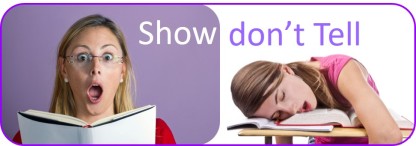 Hi there again. This is the final post in a four part series. If you’re looking for any of the other posts, they can be found below.
Hi there again. This is the final post in a four part series. If you’re looking for any of the other posts, they can be found below.

 However, as much as writers love to hear what worked, it’s just as important to know what didn’t. Even in the pages I voted for, there was room for improvement. I’ll run through a list of recurring issues that popped up in the entries, but first a word about editors. Now I’m not an editor, I don’t work for an editor, and I’m not endorsing any particular editorial service. However, I have most certainly benefitted from having a thorough editor eviscerate my work. A good editor is trained to see the issues I point out below and help you correct them.
However, as much as writers love to hear what worked, it’s just as important to know what didn’t. Even in the pages I voted for, there was room for improvement. I’ll run through a list of recurring issues that popped up in the entries, but first a word about editors. Now I’m not an editor, I don’t work for an editor, and I’m not endorsing any particular editorial service. However, I have most certainly benefitted from having a thorough editor eviscerate my work. A good editor is trained to see the issues I point out below and help you correct them. Hi there again. This is the third post in a four part series. If you’re looking for any of the other posts, they can be found below.
Hi there again. This is the third post in a four part series. If you’re looking for any of the other posts, they can be found below.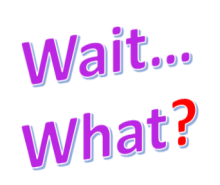 Yeah, it’s true. As coveted as “showing” is, that doesn’t mean it’s always the best choice. In fact, if we used it all the time, our books would be thousands of pages long. Showing involves using specific details and images to show the reader the scene. Those details and images require words…sometimes lots of words.
Yeah, it’s true. As coveted as “showing” is, that doesn’t mean it’s always the best choice. In fact, if we used it all the time, our books would be thousands of pages long. Showing involves using specific details and images to show the reader the scene. Those details and images require words…sometimes lots of words. statistical analysis of the p2p16/March contest.
statistical analysis of the p2p16/March contest. This means writers were submitting their entries to editors that had specifically said they don’t work with that genre. All of the editors have a
This means writers were submitting their entries to editors that had specifically said they don’t work with that genre. All of the editors have a 
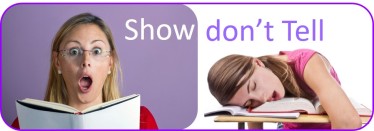 Hi there again. This is the second post in a four part series. If you’re looking for any of the other posts, they can be found below.
Hi there again. This is the second post in a four part series. If you’re looking for any of the other posts, they can be found below.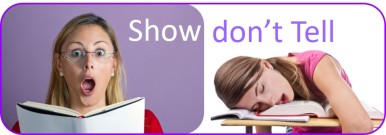 I’m just going to jump right into this, because there’s really no easy way to start this topic. “Show don’t tell” is one of those things writers hear about all the time, and it’s a concept that causes no end of frustration for new writers and veterans alike. Don’t believe it? Just take a stroll around the internet and see how many different articles, books and advice blogs there are on the topic. (Yeah, I realize I’m adding to the dog pile here).
I’m just going to jump right into this, because there’s really no easy way to start this topic. “Show don’t tell” is one of those things writers hear about all the time, and it’s a concept that causes no end of frustration for new writers and veterans alike. Don’t believe it? Just take a stroll around the internet and see how many different articles, books and advice blogs there are on the topic. (Yeah, I realize I’m adding to the dog pile here). Yeah, I get it. Saying voice comes down to word choice and sentence structure is pretty vague. Let me try to flesh that out a little. Start with the opening of this post. What words did I choose and how did I arrange the sentences? Did it have any effect on how you picture me as a real person? Do you think of me as a very formal professorial type, with my white hair and pressed suit – explaining the technical intricacies of voice as I tap my pointer on the lesson written across the chalkboard? Or did you picture someone wearing a pair of open-toed sandals and a faded t-shirt, who just plopped down next to you at the corner café to chat about writing and the world in general?
Yeah, I get it. Saying voice comes down to word choice and sentence structure is pretty vague. Let me try to flesh that out a little. Start with the opening of this post. What words did I choose and how did I arrange the sentences? Did it have any effect on how you picture me as a real person? Do you think of me as a very formal professorial type, with my white hair and pressed suit – explaining the technical intricacies of voice as I tap my pointer on the lesson written across the chalkboard? Or did you picture someone wearing a pair of open-toed sandals and a faded t-shirt, who just plopped down next to you at the corner café to chat about writing and the world in general?  very interested in that flurry of twitter activity the contest generates. While the teases may be deliciously tantalizing on their own, they can also be extremely educational. Particularly when we take a look at some enlightening trends that run through them.
very interested in that flurry of twitter activity the contest generates. While the teases may be deliciously tantalizing on their own, they can also be extremely educational. Particularly when we take a look at some enlightening trends that run through them.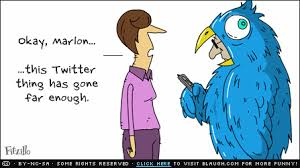 little park within walking distance of our house. So I grabbed the dog and the kid….gave my darling wife a peck on the cheek and took off to clear my head. Or so I thought.
little park within walking distance of our house. So I grabbed the dog and the kid….gave my darling wife a peck on the cheek and took off to clear my head. Or so I thought.